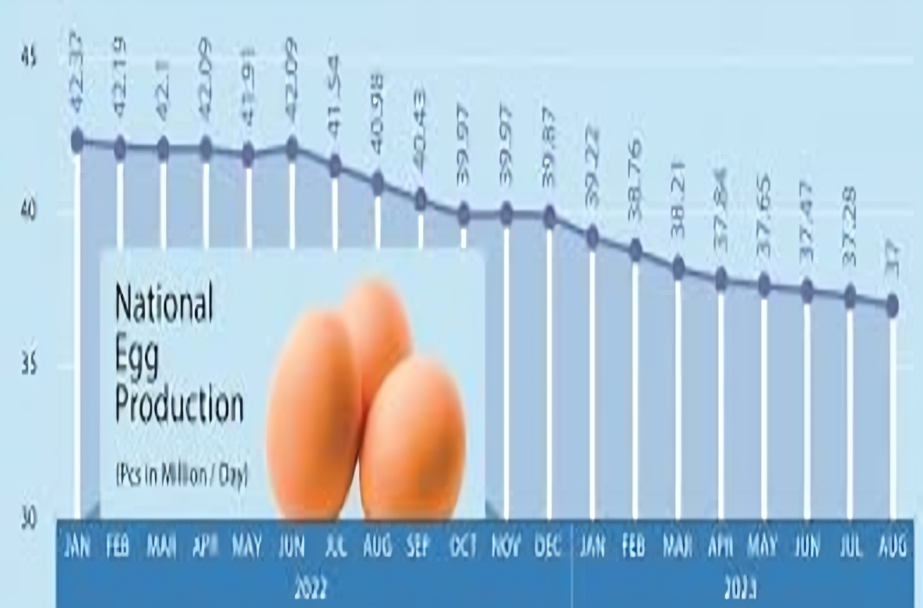Introduction
Over the past few months, individuals have been grappling with a discernible rise in egg prices, a pattern expected to endure throughout the initial half of 2024. This upturn follows a preceding downturn but can be ascribed to a myriad of intricate factors, with the prominent factor being the resurgence of bird flu outbreaks significantly impacting egg production nationwide. This noteworthy economic shift is something that could be explored in-depth on a money podcast, delving into the intricacies of market dynamics and the ripple effects of such occurrences.
Price Fluctuations
Data from the U.S. Bureau of Labor Statistics reveals a significant uptick in the average cost of a dozen Grade A large eggs, rising from $2.14 in November to $2.51 in December, marking an 8.9% increase within a month. Despite this recent spike, egg prices remain considerably lower than a year ago, down by 23.8% from December 2022.
Historical Patterns
The fluctuation in egg prices is not an isolated incident but rather part of a historical pattern characterized by periods of both stability and volatility. Before February 2022, prices had remained below $2 since March 2016. However, the onset of the COVID-19 pandemic, coupled with inflationary pressures, led to a significant surge in egg prices, with the cost per dozen reaching a peak of $4.82 in January 2023.
Primary Catalyst: Bird Flu Outbreak
The primary catalyst behind the soaring egg prices is the widespread outbreak of H5N1, a highly contagious and deadly strain of avian influenza, commonly known as bird flu. This outbreak, which began in early 2022, quickly escalated into the largest bird flu outbreak in U.S. history, severely impacting egg production nationwide.
Supply-Demand Imbalance
The reduction in egg supply resulting from the outbreak, combined with consistent consumer demand, has created a supply-demand imbalance, driving prices upwards. Although prices temporarily eased as the number of bird flu cases declined in 2023, a resurgence of cases in November reversed this trend, further diminishing the population of egg-laying hens by more than 5 million birds, according to the USDA Economic Research Service.
Anticipated Price Trends
Due to the ongoing challenges posed by the bird flu outbreak, the USDA anticipates continued price increases in the egg market throughout the first half of 2024. The persistent shortage of eggs is primarily attributed to the significant loss of egg-laying chickens due to the outbreak, with over 81 million birds reported dead in the U.S. as of January, according to the Centers for Disease Control and Prevention.
Ramifications and Impacts
The ramifications of these elevated egg prices extend beyond the grocery aisle, affecting consumers, producers, and the broader economy. For consumers, higher egg prices mean increased grocery bills, potentially impacting household budgets, particularly for lower-income families. Conversely, producers may face challenges in maintaining profitability amid rising input costs, leading to potential disruptions in the egg supply chain. Additionally, the inflationary pressures stemming from increased food prices contribute to broader economic concerns, impacting purchasing power and inflation rates.
Exploring Solutions
In response to the ongoing crisis, stakeholders across the industry are exploring potential solutions to mitigate the impact of the bird flu outbreak on egg prices. Efforts to enhance biosecurity measures on poultry farms, implement vaccination programs, and improve disease surveillance and monitoring systems are underway to prevent future outbreaks and safeguard the stability of the egg market.
Conclusion
In conclusion, the recent surge in egg prices results from a complex interplay of factors, with the resurgence of bird flu outbreaks emerging as a primary driver. While consumers may experience temporary relief from high prices during decreased infection rates, the long-term outlook suggests continued volatility in the egg market until the bird flu outbreak is effectively controlled through coordinated efforts across the industry and regulatory agencies.

